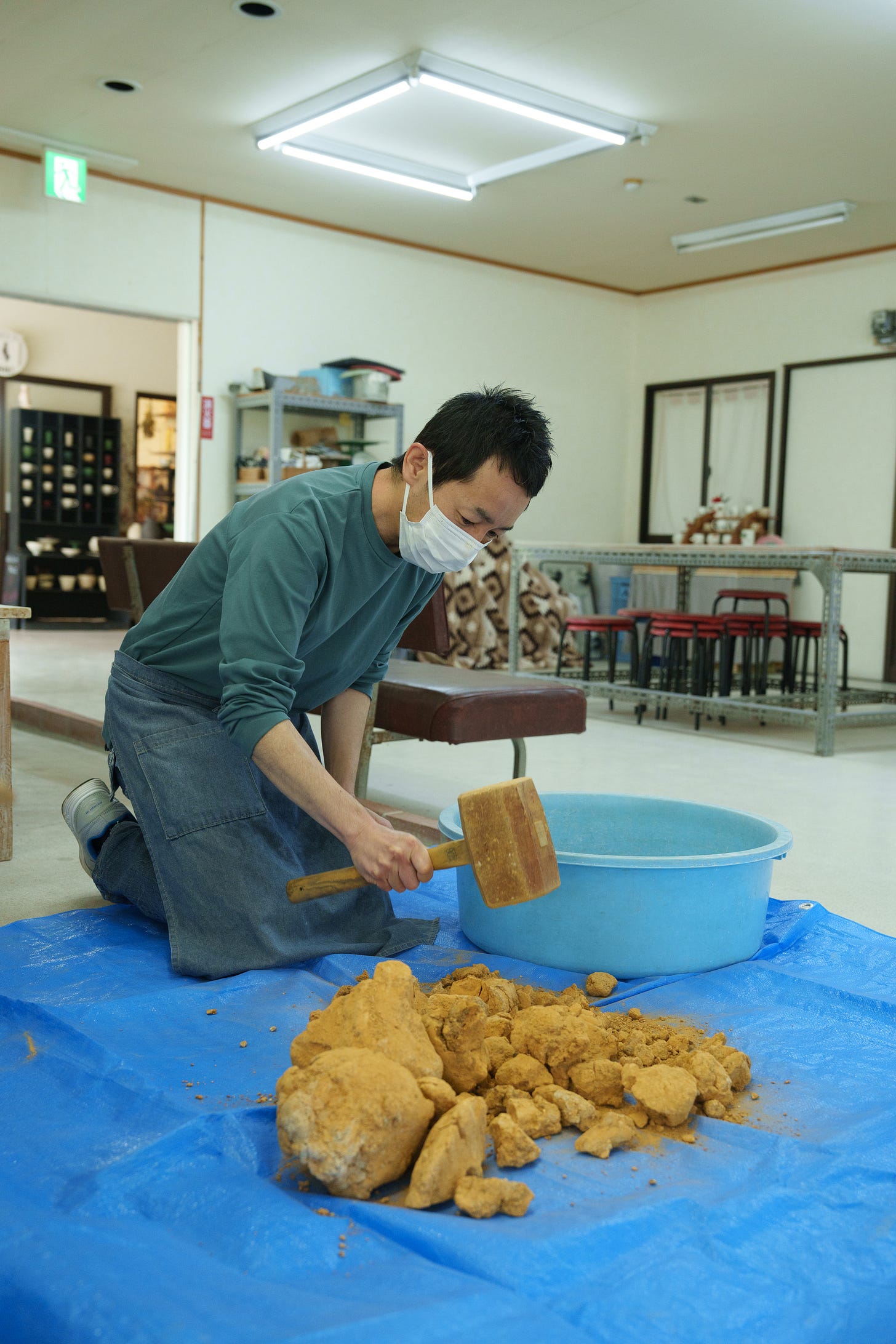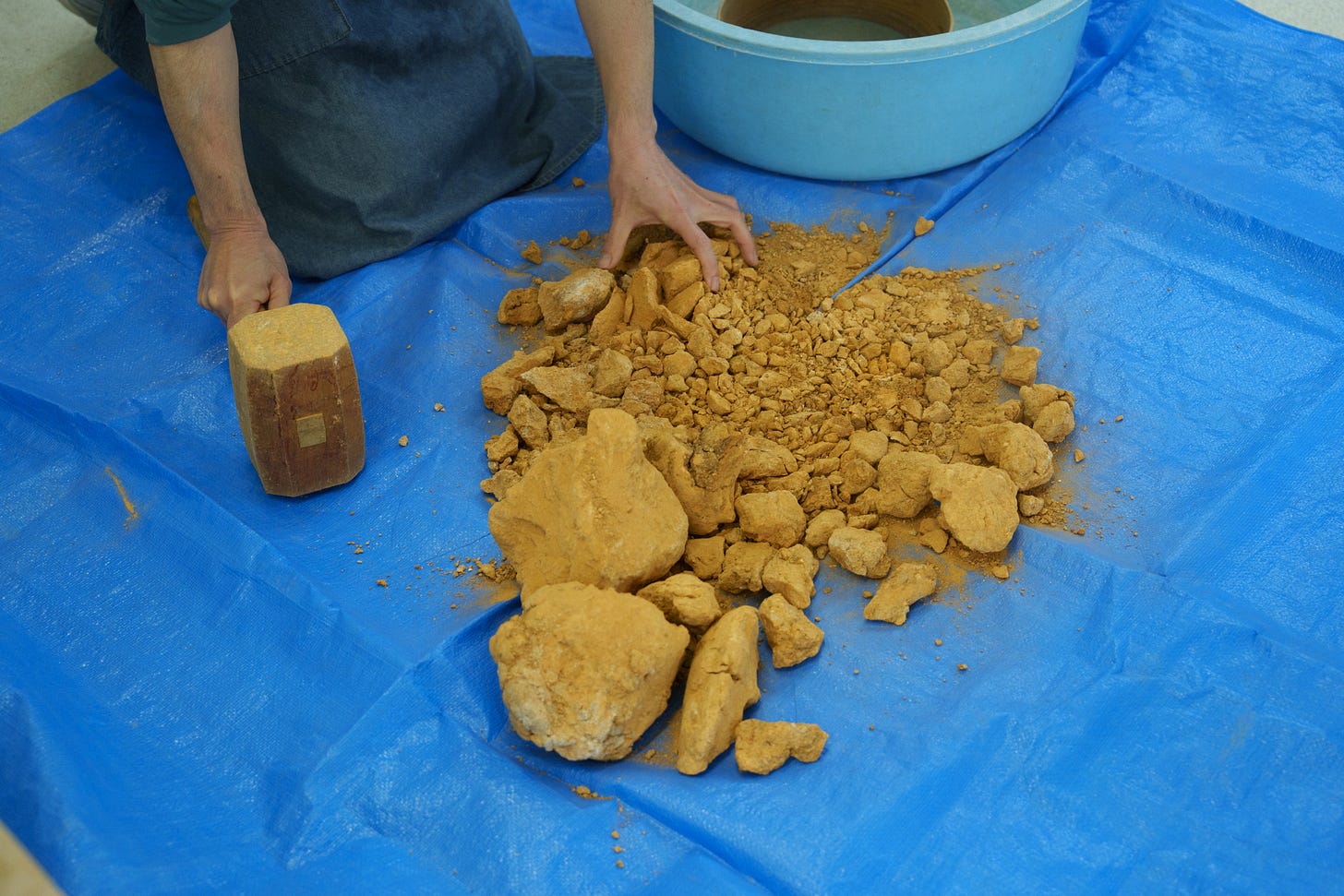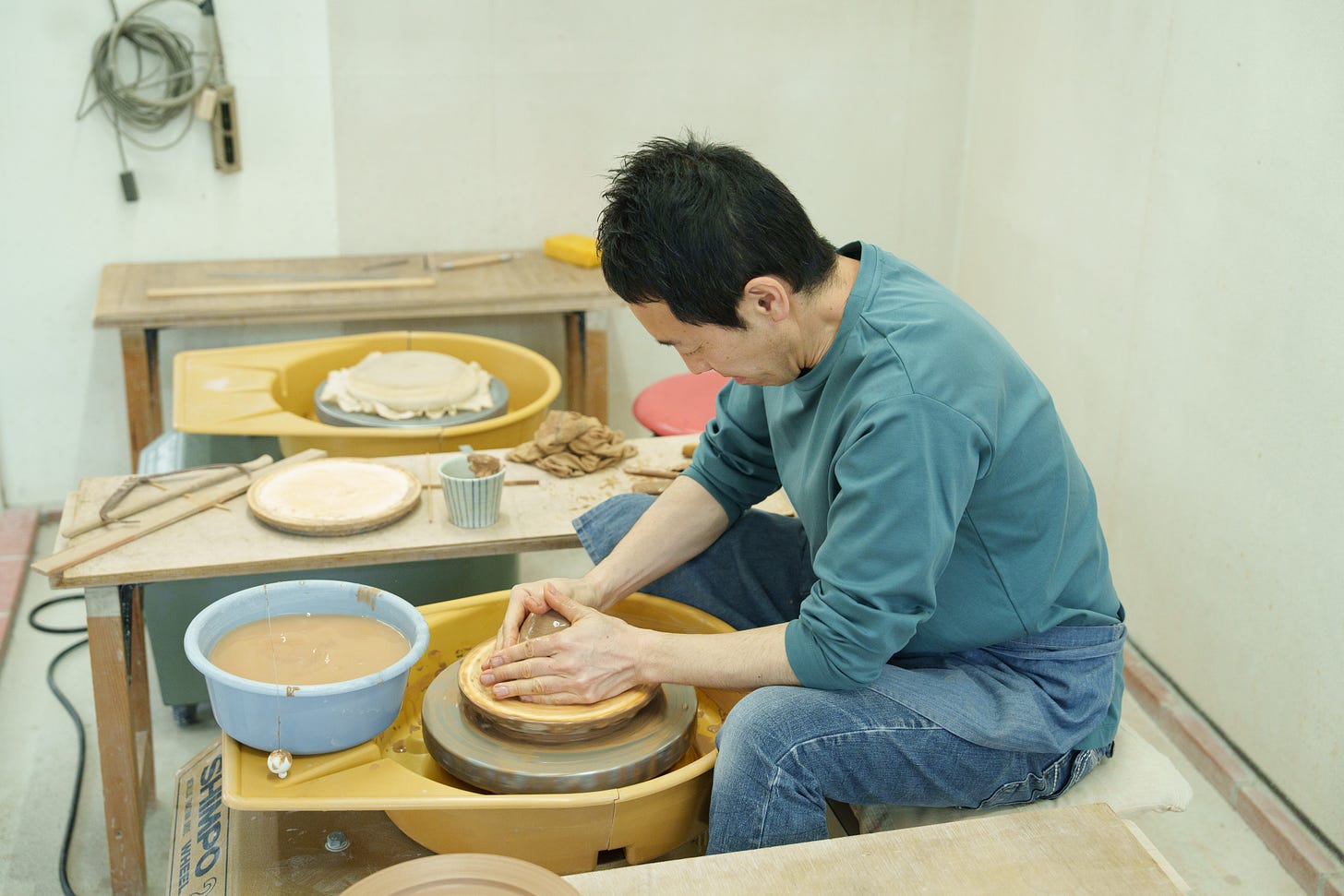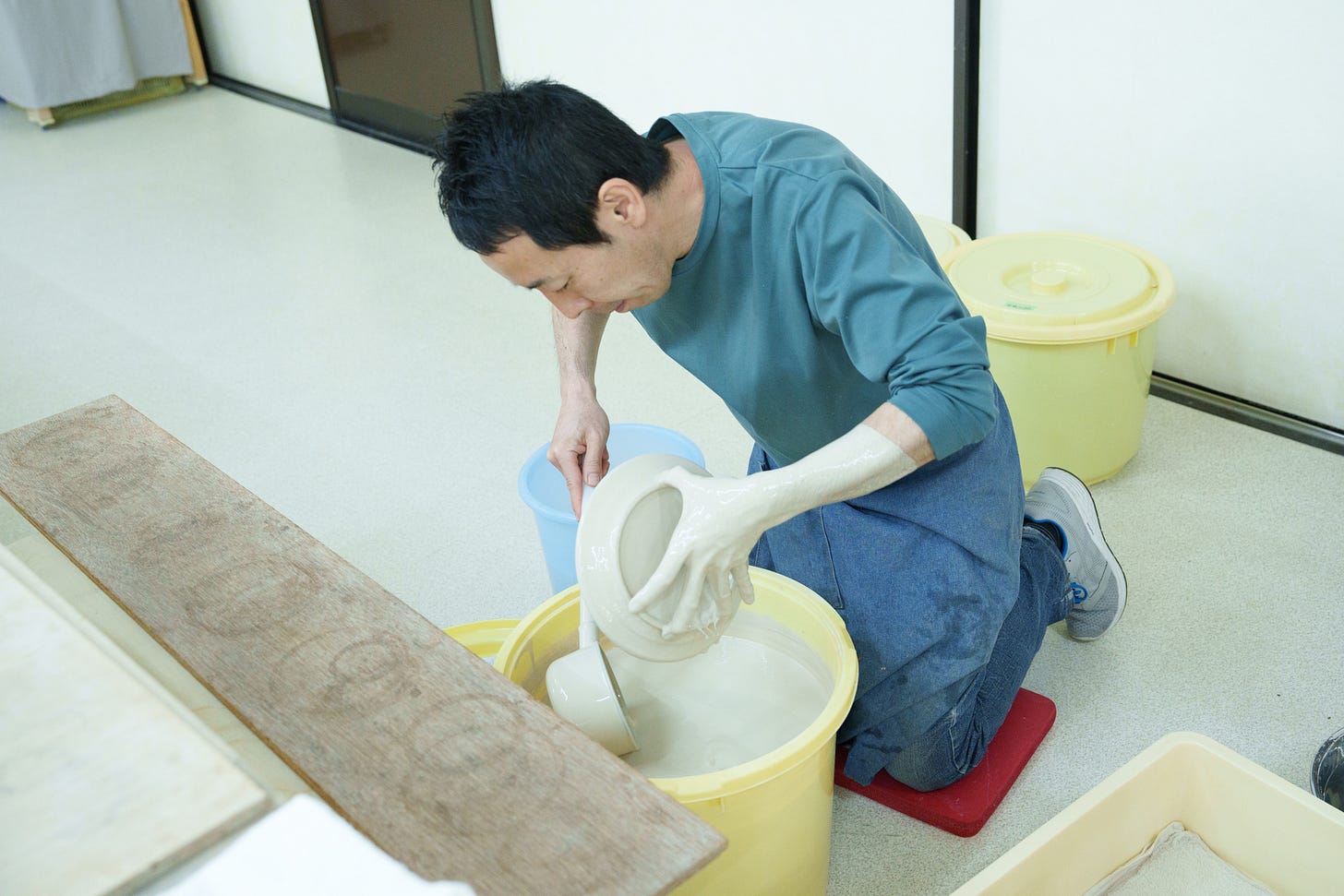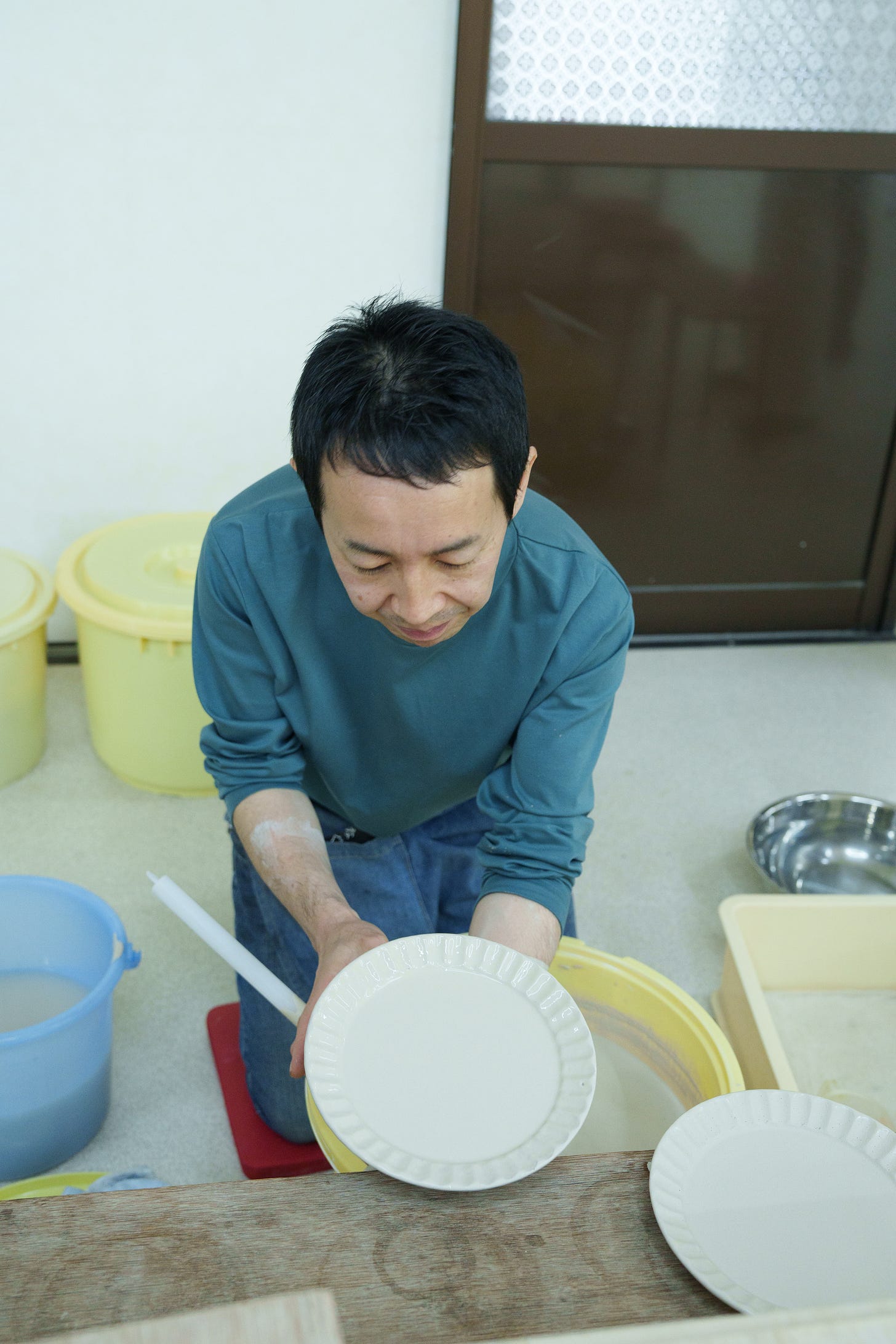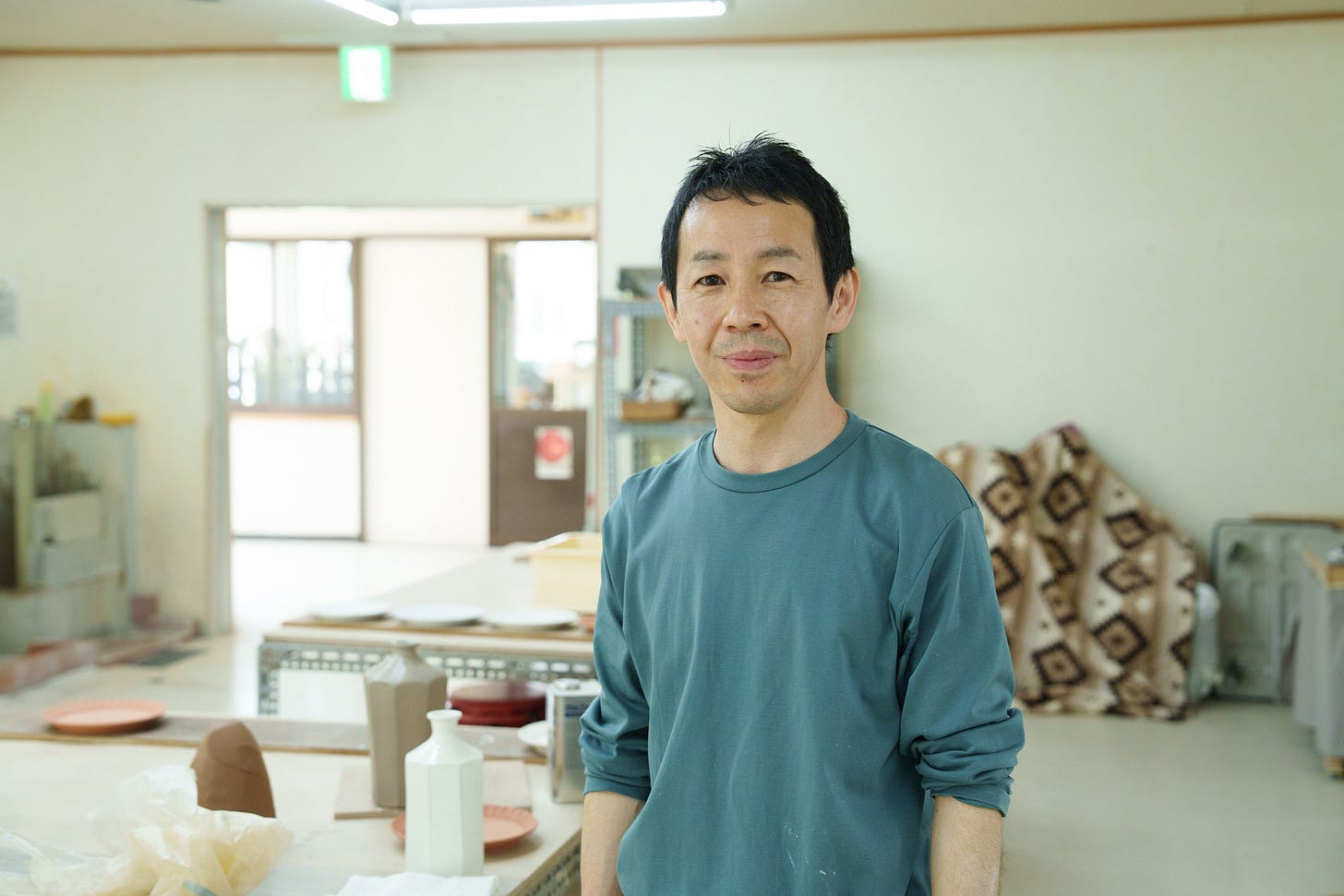MINO: THE KINGDOM OF POTTERY
Hitoshi Kato: The Art Table
Mino: The Kingdom of Pottery
The region of Mino, in the Gifu Prefecture of Japan, has a long, rich history dating to the 7th century A.D., gaining prominence through the production of ceramics for the tea ceremony. Today, it remains a significant center of ceramic production. Many ceramicists who work in Mino create contemporary clay art. Do not think of the traditional tea bowl, which has been the touchstone of Japanese ceramics for centuries, and still made by most artists. While contemporary artists are connected to that tradition, they have elevated the clay to new horizons.
Hitoshi Kato
A second-generation ceramist, is working in Toki City, his birthplace. He focuses his creative energies on tabletop pieces, and his pieces have a distinctive milky-white, powdery look, as he applies a white liquid clay to a dark clay body. While Kato is using the ‘Kohiki,’ a traditional Japanese pottery technique, originating in Korea, and characterized by this unique texture, it is the type of tableware that he is crafting in Mino, and the shift he has made in infusing traditions with contemporary notions of lifestyle, that make his work so intriguing. He has devised tableware for Westerners, far removed from typical Japanese tableware, known for its small scale for Japanese cuisine, and for reflecting seasonal changes. Like his local peers, proud of working in Toki, he likes to call his work ‘Toki Ware.’.
Thanks to his representation by the Guild in New York City, Hitoshi’s tableware has brought him to the foreground of the new artisanal tabletop world. His pieces exemplify the impact of the dealer in guidance and in leading and enabling artisans to push boundaries of their methods and to become ambassadors of Japanese kogei in the world. The Guild, founded by Robin Standefer and Stephen Alesch has brought a new vision to the tabletop, connected to crafts and cultures of the master craftsmen presented in the eponymous shop. The philosophy behind the Guild manifests that every piece has a story and that story is rooted in various cultures across the globe, brought together under one roof. The notion of handcraftsmanship, attached to quality and to contemporary living, stands at the core of the Guild.
A graduate of Osaka University of Arts, Hitoshi studied ceramics at Toki City Ceramic Testing Center. He is a contemporary artist who works in the most traditional of ways and whose soul and hands are embossed in every piece coming out of his studio. He creates the tableware from dark clay, which he digs himself in a basin next to his home in Mino. After he hammers the hard clay, he powders it to create fine sand, which he then mixes with water. Each plate is thrown on the wheel, each is unique, and each is formed from the artisan’s hand. The plates are then decorated in the Shinogi technique, where a scalloped pattern is created by carving grooves on the rim of the plate. Shinogi is a pattern traditionally used at the highest point on Japanese swords, where the blades are curved on both sides. Each piece is then being deep into a bucket filled with white slip and is fired before a translucent glaze is applied for the second firing.
Hitoshi’s contribution is in the formation of the artisanal tableware, where handcrafted, unique items for dining are used to achieve a personalized and unique setting and to elevate the dining experience beyond the functional. This contemporary style of dining achieves a bespoke quality in the curated interiors, where mass-produced products are excluded. Pottery by independent makers is the perfect fit for the beyond-the-ordinary quality of the artisanal table.
Photography by © Takuro Kawamoto.
This visit was enabled thanks to Roman and William Guild.




